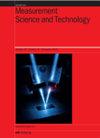Cyclic voltammetry signal analyses for equivalent electric circuits consisting of multiple resistors and capacitors
IF 3.4
3区 工程技术
Q1 ENGINEERING, MULTIDISCIPLINARY
引用次数: 0
Abstract
An equivalent circuit is a combination of resistors, capacitors, inductors, Warburg impedance or constant phase elements which is widely measured and analyzed to understand electrochemical (EC) properties of materials such as batteries, thin films, or corrosion. An equivalent electric circuit is also built as different dummy cells to evaluate the measurement accuracy of EC instruments by key detection modes including electrochemical impedance spectroscopy (EIS) and cyclic voltammetry (CV). Dummy cell signals for EIS can be easily understood and simulated by existing EIS signal analysis software, while dummy cell signals for CV curves have no simulation formula so far. When using dummy cells for CV tests, users can only observe if the CV curves obtained seem to be correct, which impairs the accuracy and efficiency of quality as well as functionality judgement of an EC instrument. In this study, we conducted CV signal analyses on 5 cases of equivalent circuits consisting of multiple resistors and capacitors, with their correctness verified by dummy cell experiments using two different potentiostats. Based on the measured CV signals, we further demonstrated a data process method to judge the performance of a potentiostat quantitatively and automatically. This study enables researchers to calculate CV curves of resistors and capacitors formed EC equivalent circuits and provides a quantitative method to verify if an EC instrument is functioning well.由多个电阻器和电容器组成的等效电路的循环伏安法信号分析
等效电路是电阻器、电容器、电感器、沃伯格阻抗或恒相元件的组合,广泛用于测量和分析,以了解电池、薄膜或腐蚀等材料的电化学(EC)特性。等效电路也被制作成不同的哑电池,用于评估电化学仪器通过电化学阻抗光谱法(EIS)和循环伏安法(CV)等主要检测模式进行测量的准确性。现有的 EIS 信号分析软件可以很容易地理解和模拟 EIS 的哑电池信号,而 CV 曲线的哑电池信号到目前为止还没有模拟公式。在使用哑电池进行 CV 测试时,用户只能观察得到的 CV 曲线是否正确,这影响了导电率仪质量和功能判断的准确性和效率。在本研究中,我们对 5 个由多个电阻器和电容器组成的等效电路进行了 CV 信号分析,并通过使用两种不同恒电位仪进行的假电池实验验证了其正确性。根据测得的 CV 信号,我们进一步展示了一种数据处理方法,可定量、自动地判断恒电位仪的性能。这项研究使研究人员能够计算电阻器和电容器的 CV 曲线,形成电化学等效电路,并提供了一种定量方法来验证电化学仪器是否运行良好。
本文章由计算机程序翻译,如有差异,请以英文原文为准。
求助全文
约1分钟内获得全文
求助全文
来源期刊

Measurement Science and Technology
工程技术-工程:综合
CiteScore
4.30
自引率
16.70%
发文量
656
审稿时长
4.9 months
期刊介绍:
Measurement Science and Technology publishes articles on new measurement techniques and associated instrumentation. Papers that describe experiments must represent an advance in measurement science or measurement technique rather than the application of established experimental technique. Bearing in mind the multidisciplinary nature of the journal, authors must provide an introduction to their work that makes clear the novelty, significance, broader relevance of their work in a measurement context and relevance to the readership of Measurement Science and Technology. All submitted articles should contain consideration of the uncertainty, precision and/or accuracy of the measurements presented.
Subject coverage includes the theory, practice and application of measurement in physics, chemistry, engineering and the environmental and life sciences from inception to commercial exploitation. Publications in the journal should emphasize the novelty of reported methods, characterize them and demonstrate their performance using examples or applications.
 求助内容:
求助内容: 应助结果提醒方式:
应助结果提醒方式:


